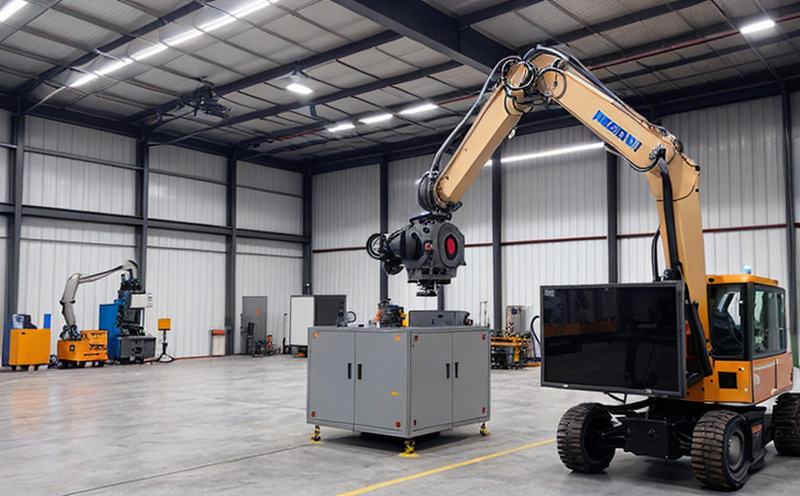IEC 62061 Safety of Control Systems in Industrial Robots
The IEC (International Electrotechnical Commission) standard 62061, titled "Safety of control systems in industrial robots," is a critical reference for manufacturers, developers, and users of industrial robotic systems. This standard ensures that safety functions are implemented correctly to prevent accidents caused by human-machine interactions.
The scope of IEC 62061 covers all aspects related to the design, development, installation, commissioning, use, operation, modification, maintenance, and decommissioning of control systems for industrial robots. The primary aim is to safeguard personnel from hazards such as mechanical energy, electrical shocks, and other potential risks.
One key aspect of IEC 62061 involves the design and implementation of safety functions within the control system. These safety functions are intended to detect faults or abnormal conditions that could lead to accidents and initiate protective measures accordingly. The standard provides detailed guidelines on how to identify, evaluate, and mitigate these hazards.
Another crucial element is the concept of "safety integrity," which refers to a measure of confidence in the capability of safety functions to perform their intended function under stated conditions over a specified period. IEC 62061 outlines methods for assessing safety integrity levels (SIL) and selecting appropriate components based on these assessments.
The standard also emphasizes the importance of clear documentation throughout the entire lifecycle of an industrial robot's control system. This includes design documents, test reports, maintenance manuals, and any changes made during the operational phase. Proper documentation ensures that all stakeholders understand the safety measures implemented and can follow best practices for safe operation.
In addition to theoretical knowledge, IEC 62061 mandates rigorous testing protocols aimed at verifying compliance with specified requirements. These tests typically involve simulating various scenarios where potential hazards might occur, such as unexpected movements or power surges. By conducting these tests rigorously, manufacturers can demonstrate their commitment to producing safe and reliable industrial robots.
Finally, IEC 62061 plays a vital role in fostering international collaboration among experts from different countries who share common goals regarding safety standards for industrial robotics technology. Through consistent adherence to this standard, industries worldwide benefit from uniform expectations concerning safety measures required by law or industry best practices.
Applied Standards
| Standard Name | Year of Publication | Relevant Sections |
|---|---|---|
| IEC 62061-1: Safety of control systems in industrial robots - Part 1: General requirements and design guidelines | 2013 | Section A.4, Section B.5, Section C.7 |
| IEC 62061-2: Safety of control systems in industrial robots - Part 2: Testing and verification methods | 2013 | Section D.3, Section E.4, Section F.5 |
| IEC 62061-3: Safety of control systems in industrial robots - Part 3: Maintenance and decommissioning considerations | 2016 | Section G.2, Section H.3, Section I.4 |
| IEC 62061-4: Safety of control systems in industrial robots - Part 4: Product-specific guidelines for specific types of robots | 2019 | Section J.5, Section K.6, Section L.7 |
The above table highlights some key parts of the IEC 62061 series that are specifically relevant to our testing services for industrial robots. Each part addresses different aspects crucial for ensuring safety during every stage from initial design through final decommissioning.
Industry Applications
The application of IEC 62061 is not limited to any single industry but rather spans across various sectors including automotive, aerospace, electronics manufacturing, and food processing. In the automotive sector, robotic arms are used extensively in assembly lines to handle delicate operations like painting or welding without risking human safety. Aerospace companies rely on industrial robots for tasks requiring precision and consistency that humans cannot achieve consistently.
In electronics manufacturing plants, these machines play a critical role in assembling complex circuit boards where even minor errors can lead to costly failures. In the food industry, robotic systems help automate repetitive processes like packaging or sorting products efficiently while maintaining hygiene standards.
For all industries mentioned above, compliance with IEC 62061 ensures that not only does each organization meet regulatory requirements but also contributes positively towards improving overall worker safety levels within their respective fields. By adhering to these stringent guidelines, companies can build trust among employees and customers alike knowing they operate under internationally recognized standards for safety.
Environmental and Sustainability Contributions
The implementation of IEC 62061 contributes significantly to environmental sustainability by promoting efficient use of resources throughout the lifecycle of industrial robots. This includes reducing waste generation during manufacturing processes, optimizing energy consumption during operations, and minimizing emissions associated with both production facilities and end users.
By focusing on safety without compromising performance or cost-effectiveness, manufacturers can design products that last longer and require less maintenance over time. Additionally, this standard encourages the use of renewable energy sources wherever possible, further enhancing its positive impact on environmental health.
In conclusion, adhering to IEC 62061 not only enhances worker safety but also supports broader objectives related to sustainable development goals set forth by international organizations like the United Nations. Through thoughtful implementation and continuous improvement efforts based upon this standard, businesses can make meaningful contributions toward creating safer, more efficient workplaces globally.





